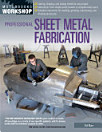Metal Nanoparticles and Nanoalloys
Roy L. Johnston · Jess P. Wilcoxon
2012 മാർ · Frontiers of Nanoscience പുസ്തകം, 3 · Elsevier
ഇ-ബുക്ക്
312
പേജുകൾ
family_home
യോഗ്യതയുണ്ട്
info
reportറേറ്റിംഗുകളും റിവ്യൂകളും പരിശോധിച്ചുറപ്പിച്ചതല്ല കൂടുതലറിയുക
ഈ ഇ-ബുക്കിനെക്കുറിച്ച്
The field of nanoscience has undergone tremendous growth in the past decade as the number of applications of nanoparticles and nanostructured materials have proliferated. Metal nanoparticles have attracted particular interest due to their potential for applications in areas as diverse as catalysis, medicine and opto-electronics. The chemical and physical properties of metal nanoparticles can vary smoothly or discontinuously with nanoparticle size, depending on the size regime and the property. In the case of bi- or multimetallic nanoparticles ("nanoalloys"), these properties also depend on the elemental composition and the chemical ordering – how the metals are distributed in the nanoparticles.It is this tunability of behavior that makes metal nanoparticles and nanoalloys so versatile and appealing.This book begins with a tutorial introducing the theoretical ideas and models that have been developed to understand metal nanoparticles. It gives an overview of experimental methods for generating and characterizing metal nanoparticles and nanoalloys and of their properties and applications, providing an introduction to material covered in more depth in subsequent chapters. A major theme of all the chapters is the effect of nanoparticle size, shape and surface chemistry on their properties – especially optical and catalytic properties. - A unified discussion of the inter-relations between modelling, synthesis and physical properties of nanoparticles and nanoalloys - A discussion of the most promising new catalytic and photocatalytic applications of nanoparticles and the approaches used to achieve these goals - A tutorial introduction which provides a basis for understanding the subsequent specialized chapters
രചയിതാവിനെ കുറിച്ച്
Roy Johnston is Professor of Computational Chemistry and Deputy Head of School at the University of Birmingham, UK. Roy has published over 150 research papers in scientific journals as well as reviews and book chapters in the fields of computational nanoscience and applications of nature-inspired computation. He has edited several volumes, including the volume Metal Nanoparticles and Nanoalloys for this series, and special issues of journals.
ഈ ഇ-ബുക്ക് റേറ്റ് ചെയ്യുക
നിങ്ങളുടെ അഭിപ്രായം ഞങ്ങളെ അറിയിക്കുക.
വായനാ വിവരങ്ങൾ
സ്മാർട്ട്ഫോണുകളും ടാബ്ലെറ്റുകളും
Android, iPad/iPhone എന്നിവയ്ക്കായി Google Play ബുക്സ് ആപ്പ് ഇൻസ്റ്റാൾ ചെയ്യുക. ഇത് നിങ്ങളുടെ അക്കൗണ്ടുമായി സ്വയമേവ സമന്വയിപ്പിക്കപ്പെടുകയും, എവിടെ ആയിരുന്നാലും ഓൺലൈനിൽ അല്ലെങ്കിൽ ഓഫ്ലൈനിൽ വായിക്കാൻ നിങ്ങളെ അനുവദിക്കുകയും ചെയ്യുന്നു.
ലാപ്ടോപ്പുകളും കമ്പ്യൂട്ടറുകളും
Google Play-യിൽ നിന്ന് വാങ്ങിയിട്ടുള്ള ഓഡിയോ ബുക്കുകൾ കമ്പ്യൂട്ടറിന്റെ വെബ് ബ്രൗസർ ഉപയോഗിച്ചുകൊണ്ട് വായിക്കാവുന്നതാണ്.
ഇ-റീഡറുകളും മറ്റ് ഉപകരണങ്ങളും
Kobo ഇ-റീഡറുകൾ പോലുള്ള ഇ-ഇങ്ക് ഉപകരണങ്ങളിൽ വായിക്കാൻ ഒരു ഫയൽ ഡൗൺലോഡ് ചെയ്ത് അത് നിങ്ങളുടെ ഉപകരണത്തിലേക്ക് കൈമാറേണ്ടതുണ്ട്. പിന്തുണയുള്ള ഇ-റീഡറുകളിലേക്ക് ഫയലുകൾ കൈമാറാൻ, സഹായ കേന്ദ്രത്തിലുള്ള വിശദമായ നിർദ്ദേശങ്ങൾ ഫോളോ ചെയ്യുക.








